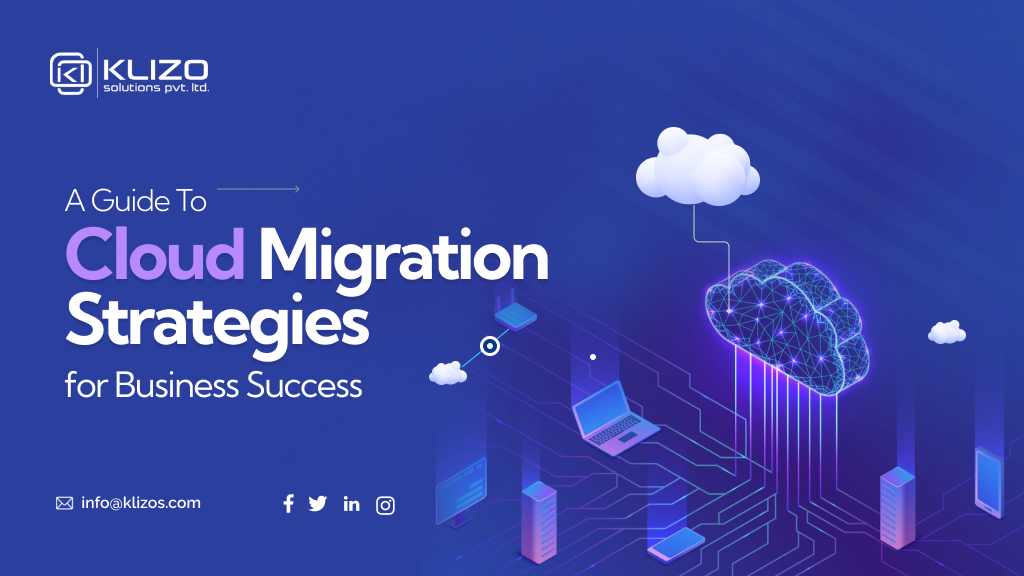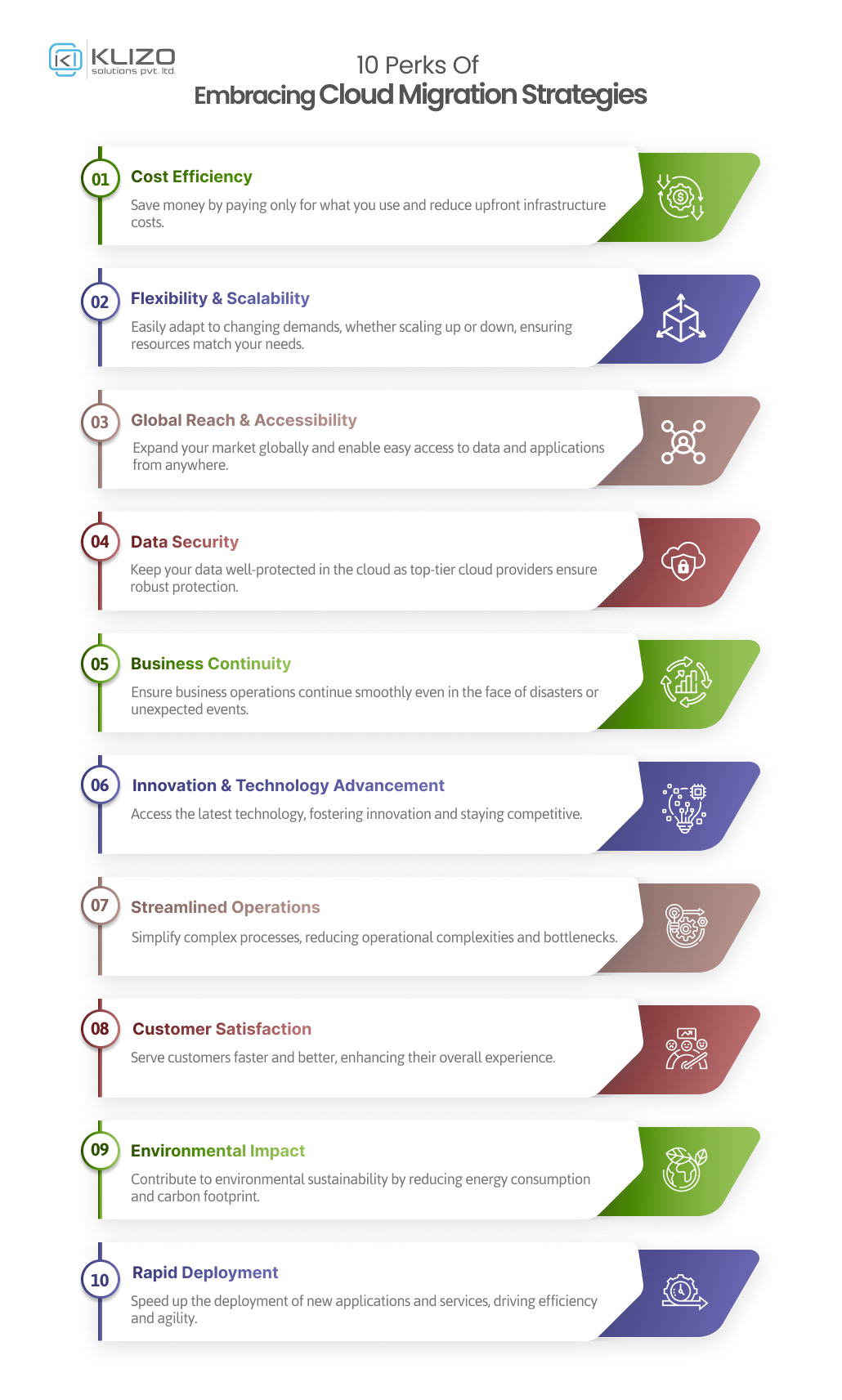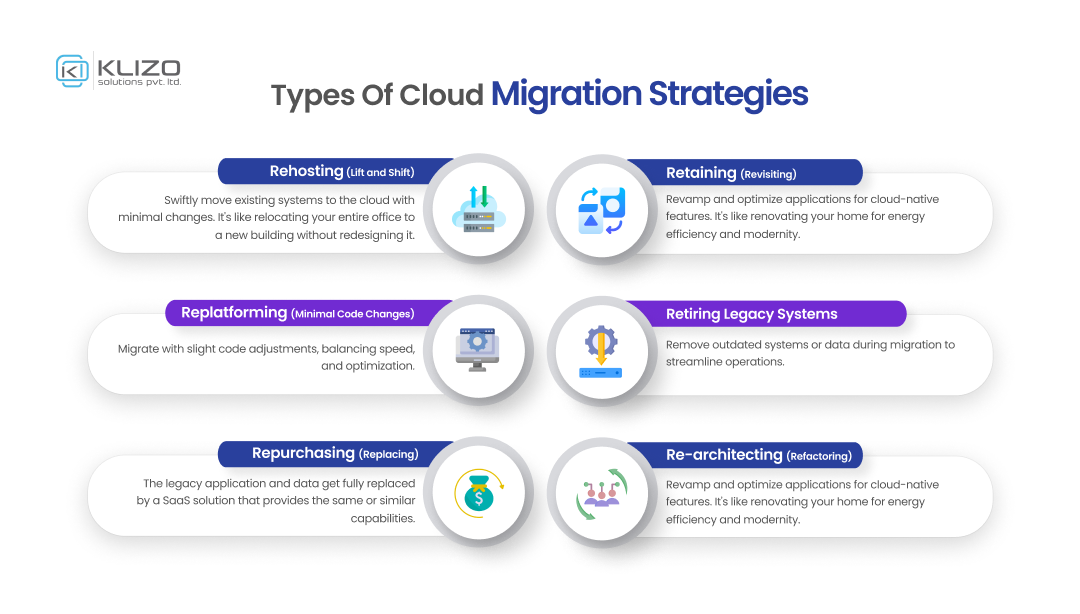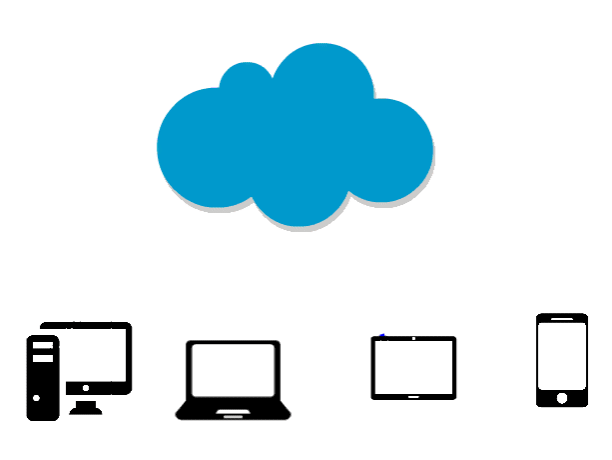


In the rapidly evolving landscape of technology and business, cloud migration turns out to be a real game-changer!
Cloud migration is not just a trend; it’s a strategic move towards future-proofing your business by moving your business elements like applications to a cloud computing environment.
Imagine a world where your business can flex, scale, and innovate at the speed of thought. It’s not science fiction; it’s cloud migration. In this world, cloud migration strategies are grand blueprints – a meticulously designed route to transport your data, applications, and digital treasures from the confines of on-premise to the boundless skies of cloud architecture.
But here’s the beauty of it: not everything in your digital realm needs to ascend to the cloud. Your cloud migration strategy must pinpoint which data and assets should go to the cloud first.
In this article today, we’ll embark on a captivating journey, unraveling the intricate tapestry of cloud migration strategies. Together, we’ll explore a model that will serve as your compass in this digital odyssey.
Cloud migration strategy refers to moving data to the cloud or the process of planning and executing the transfer of data and applications from an on-premises or co-located infrastructure to a cloud computing environment.
Cloud migration strategies allow businesses to transition from traditional on-premises systems to cloud-based solutions, providing flexibility, scalability, and cost-efficiency.

With cloud migration, you can streamline your business operations, access data from anywhere, and stay competitive in an ever-evolving market. Plus, having a clear and effective cloud migration strategy can help you achieve your business goals and minimize potential pitfalls and risks.
Cloud migration is like giving a new home to your business in the digital universe. Opting for cloud migration entails shifting its data, applications, and digital processes from on-premise servers or other cloud ecosystems to cloud platforms (Google Cloud, Microsoft Azure, or Amazon Web Services).
This shift to the cloud offers a world of advantages, from enhanced flexibility and scalability to cost savings and the ability to tap into a vast array of cloud-based services.
Cloud migration is about harnessing the power of the cloud to streamline operations, improve agility, and stay competitive in the rapidly evolving digital landscape. It is a gateway to a more efficient and dynamic business future.

Cloud migration is like embarking on a journey to a digital paradise, but choosing the right path is crucial.
And that’s what we have done here – exploring the various cloud migration strategies for you! Let’s check them out.
Imagine you’re moving your entire home to a new location, from one city to another. Rehosting or lift and shift, one of the top cloud migration strategies is like this massive move.
You’re taking your applications and data as they are and placing them in the cloud. It’s quick, straightforward, and involves a relatively modest investment, but you may not fully exploit cloud benefits.
Perks:
Example: Shifting an on-premises website to Amazon Web Services (AWS), one of the top cloud providers, without making any code changes.
Best Suitable: This approach is well-suited for smaller organizations with straightforward workloads and evolving long-term service and scalability plans. It’s also a smart choice for organizations heavily reliant on virtual machines in their infrastructure.
Often referred to as the ‘move and improve’ strategy, re-platforming is one of the cloud migration strategies that focuses on implementing minimal alterations to facilitate the shift to the cloud, particularly to enhance scalability. This approach keeps the core application architecture untouched, resembling a slight variation of the ‘Rehosting’ strategy.
It’s like remodeling your kitchen for better functionality while you relocate. Here, you make some adjustments to your applications to optimize them for the cloud environment.
But it comes with a drawback – it may not fully harness the extensive advantages of cloud-native approaches, potentially missing out on certain cloud benefits.
Perks:
Example: Adapting an on-premises database to leverage managed database services in Azure.
Best Suitable: Designed for organizations contemplating cloud migration while apprehensive about the associated risks with migrating all legacy apps simultaneously.
Repurchasing is like selling your old car and buying a brand-new one at your destination. It involves shifting to cloud-based products and can be done by either adopting new software-as-a-service (SaaS) options or migrating licenses from local to cloud servers.
It simplifies management but may limit customization. It’s a cost-effective approach for moving applications from legacy environments.
Perks:
Example: Replacing an on-premises email server with Microsoft 365 or Google Workspace.
Best Suitable: Businesses seeking to harness cloud-native functionalities without building systems from the ground up.

In the world of technology, applications inevitably become outdated, either due to redundancy or the emergence of superior cloud-based alternatives. If certain applications or services no longer hold value for your customers, there’s no need to migrate them to the cloud.
With the retire strategy, you leave behind obsolete applications or data that no longer serve a purpose. It’s like decluttering your life before a move.
Perks:
Example: Discontinuing an old CRM system that’s no longer in use.
Best Suitable: Businesses wanting to get rid of redundant workloads and outdated legacy applications that are no longer active.
Occasionally, you choose not to move at all. And that’s the retaining strategy.
Retaining means you leave certain applications or data on-premises because it makes sense for your business. It’s like keeping a vacation home while living in your primary residence.
Perks:
Example: Keeping sensitive customer data on your local servers for regulatory compliance reasons.
Best Suitable: This cloud migration strategy is ideal for businesses seeking resource management control and contemplating a hybrid cloud migration. It is also suitable for applications necessitating operation within on-premises data centers due to compliance or security prerequisites.
Now, imagine you’re building a new, modern home from scratch at your destination. Refactoring, or re-architecting, involves completely redesigning or rebuilding existing infrastructure, harnessing the full power of the cloud, including serverless computing and auto-scaling, which are often challenging in on-premise setups.
This approach, though time and resource-intensive, is chosen when organizations opt to re-architect code and frameworks to maximize cloud advantages. While it’s the costliest strategy, it promises substantial long-term benefits.
Perks:
Example: Rewriting a monolithic on-premises application as microservices in Google Cloud for greater agility.
Best Suitable: High-usability applications with a strong business case for performance enhancement, as well as those requiring refactoring due to evolving regulatory compliance or security concerns.
Each cloud migration strategy has its strengths and suits different scenarios. The key is selecting the right strategy that aligns with your organization’s goals, resources, and technical requirements.
Now that you know about cloud migration strategies and are eager to embark on a cloud migration journey, here is a quick glimpse of the basic steps to make the transition successful. Let’s dig in!
No matter what cloud migration strategies you choose, to do it successfully, just like seasoned travelers plan their journey, you must begin by assessing your current IT landscape.
Identify which applications and data you want to move to the cloud. Consider your organization’s goals, budget, and timeline. It’s like plotting your route on a map before hitting the road.
Just like your travel plans remain incomplete without choosing the right mode of transformation, your cloud migration requires you to choose the appropriate cloud model.
Decide whether you’ll need public cloud services like AWS, Azure, or Google Cloud or opt for a private or hybrid cloud setup. The choice depends on the specific needs and preferences of your business software or applications.
Moving data is like packing your belongings for a move. Develop a strategy for transferring your data to the cloud. Decide if you’ll do a “lift and shift”, re-architect your applications for the cloud-native environment, or opt for any other cloud migration strategies.
And for this, the above section of this article can be pretty helpful and informative!

You must monitor the cloud migration process to ensure it meets the expected outcomes and quality standards.
The better you can manage and maintain the migrated applications in the new environment, the more smoothly and securely your applications will run in the cloud.
Plus, optimization helps to achieve higher efficiency, reliability, availability, scalability, security, and innovation in the cloud. So, make a point to improve and enhance the migrated applications in the new environment using continuous improvement methods.
After migrating to the cloud, validation is the key to success. It’s not enough to transfer data; you must ensure everything works as expected.
There are many tools available you can use to compare pre-move and post-move performance, verifying technical and business benefits in a low-risk environment. This thorough validation ensures your cloud journey ends on a high note, optimizing performance and efficiency.
We understand that migrating applications and software to the cloud can be a daunting task!
So, if you’re seeking to leap into the cloud without the headaches of migration or lack an in-house team with the expertise to help you with smooth cloud migration, we, Klizo Solutions, can be your trusted partner.
With our team of seasoned cloud migration specialists, we take the complexity out of the equation and offer a streamlined path to the cloud, ensuring a seamless transition.
Our professional cloud migration specialists bring years of experience to the table, guiding you through every step of the journey, including helping you determine the appropriate cloud migration strategies.
When it’s migrating to the cloud, there’s no one-size-fits-all approach. Klizo Solutions tailors each migration strategy to your unique business requirements. Whether you’re migrating a single application or your entire IT infrastructure, we craft a solution that aligns perfectly with your goals, budget, and timeline.
At Klizo Solutions, you get
So, what are you waiting for? Contact Klizo Solutions today and experience the ease and confidence of cloud migration without the hassles as we help you embrace the most suitable cloud migration strategies for your business success.
Let our experts take the wheel, guiding your business into the cloud era with precision and expertise. Your cloud success story begins here!
Joey Ricard
Klizo Solutions was founded by Joseph Ricard, a serial entrepreneur from America who has spent over ten years working in India, developing innovative tech solutions, building good teams, and admirable processes. And today, he has a team of over 50 super-talented people with him and various high-level technologies developed in multiple frameworks to his credit.

Subscribe to our newsletter to get the latest tech updates.